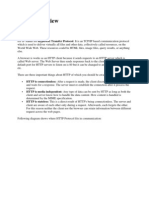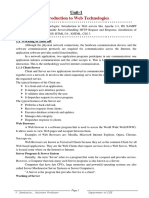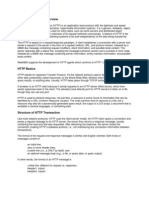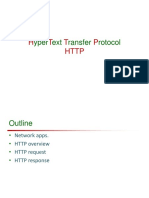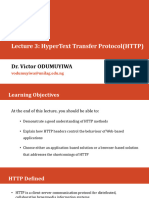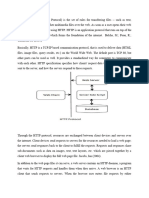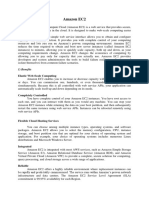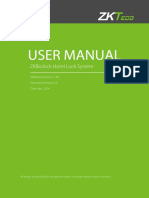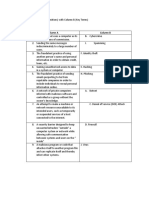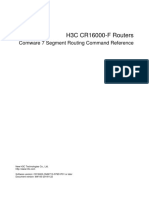0% found this document useful (0 votes)
21 views28 pagesL13 - HTTP Protocol
The document provides an overview of the HTTP protocol, detailing its role as a client-server communication method for transmitting hypermedia documents over the internet. It covers key features of HTTP, including its stateless nature, request and response message formats, and various request methods. Additionally, it discusses persistent and non-persistent connections, as well as the use of cookies for maintaining state between client and server.
Uploaded by
sammo0001Copyright
© © All Rights Reserved
We take content rights seriously. If you suspect this is your content, claim it here.
Available Formats
Download as PPTX, PDF, TXT or read online on Scribd
0% found this document useful (0 votes)
21 views28 pagesL13 - HTTP Protocol
The document provides an overview of the HTTP protocol, detailing its role as a client-server communication method for transmitting hypermedia documents over the internet. It covers key features of HTTP, including its stateless nature, request and response message formats, and various request methods. Additionally, it discusses persistent and non-persistent connections, as well as the use of cookies for maintaining state between client and server.
Uploaded by
sammo0001Copyright
© © All Rights Reserved
We take content rights seriously. If you suspect this is your content, claim it here.
Available Formats
Download as PPTX, PDF, TXT or read online on Scribd
/ 28




